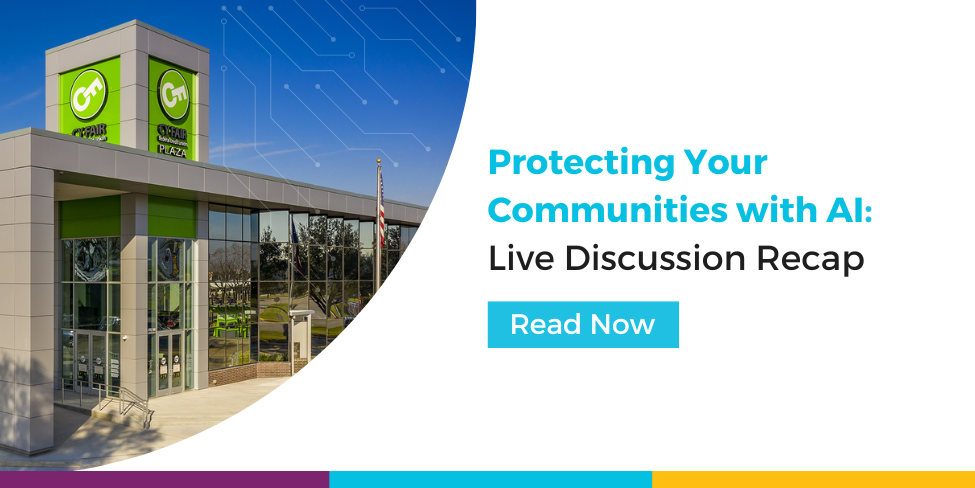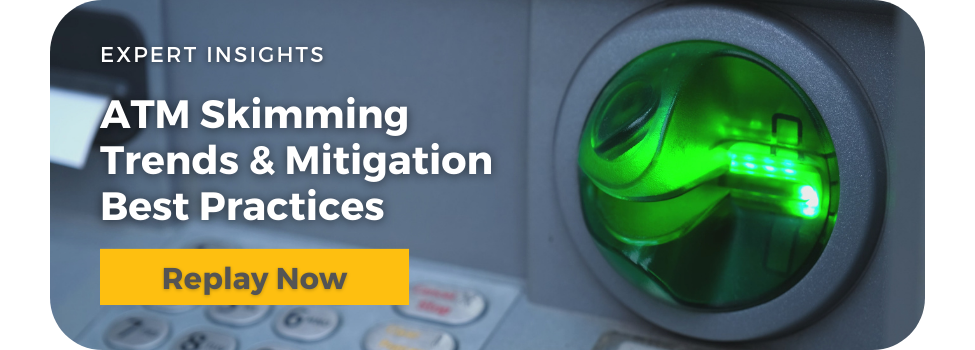Security Solutions for Banks and Credit Unions: Branch and ATM Protection
Introduction
Financial institutions are considered high-risk environments due to their susceptibility to robberies, crimes, and violent incidents. This heightened risk is exacerbated by the high-stress environment and various factors such as disgruntled employees, consumers who may be angry over denied loans or repossessions, and the large amounts of cash held on premises. Additionally, these institutions are frequently targeted by organized crime rings for skimming attacks and other sophisticated schemes, making robust security measures imperative.
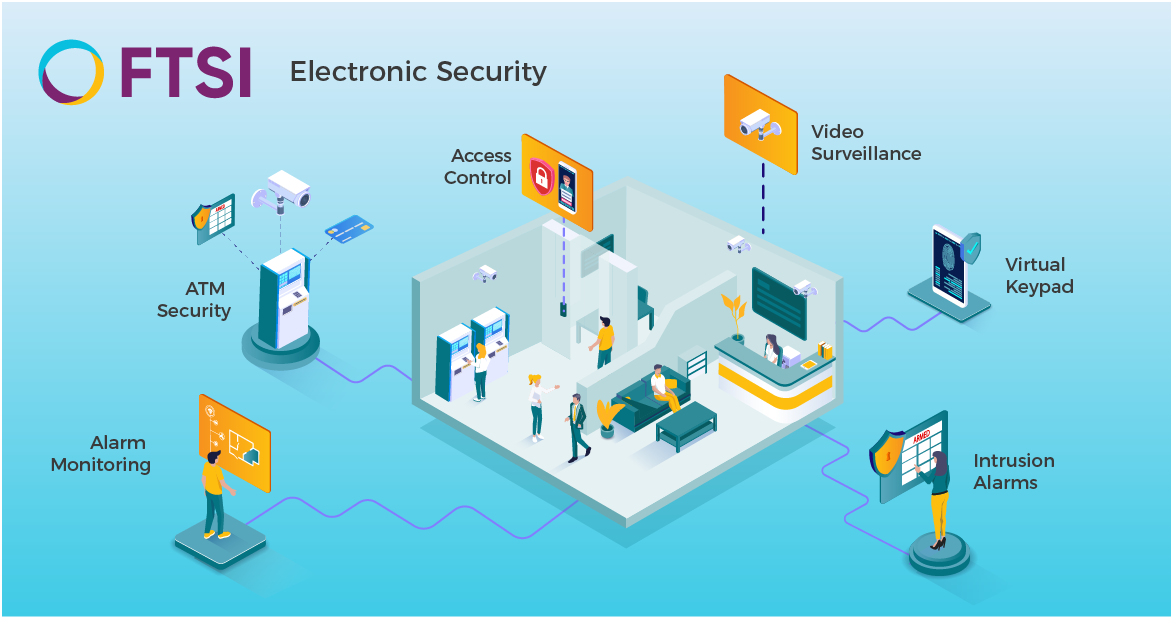
|
|
|
|
|
Branch Security
The safety of staff and consumers is top priority for any financial institution. As in-person experiences for banks and credit unions change, so must security.
To create more inviting spaces and comfortable experiences, some financial institutions are creating open-plan branches, where staff conduct business from standing desks in open areas. Staff in these open-plan branches rely on Teller Cash Recyclers (TCRs), eliminating consistent need for vault access and less-secure teller drawers. Others are considering a smaller physical footprint, downsizing building space and only focusing on high-value services offered in-person.
Some institutions even feature beverage bars, public high-speed internet cafes, and comfortable seating areas. There is even a growing emergence of unstaffed lobbies open 24/7, where consumers can physically walk inside parts of their bank or credit union to conduct business via ATMs and ITMs – without any staff present.
Financial branches are traditionally a high security risk, since virtually anybody can walk through the doors. So, while open-plans and 24/7 access to your lobby is convenient for all, these modern and comfortable designs must also be highly secure, posing unique challenges for financial institutions.
Workplace violence also poses unique challenges for financial institutions. Banks and credit unions can be a high-stress environment, especially when dealing with consumers who may be denied loans, falling behind on payments, experiencing repossession, having mental health crises, and more.
Domestic violence incidents also have tendencies to spill over into workplaces, especially financial institutions where a partner or ex partner may be in-person to settle their accounts to part ways.
It's important for financial institutions to have a workplace violence plan in place, and that all staff are trained on the plan. This can include what to do in an active shooter situation, a hand-to-hand combat situation, handling verbal harassment, rendering aid, calling for help, and more.
Workplace Safety: Expert-Led Active Shooter Response Training > Watch Now
Receive practical safety tips from a Firearms-Trained Nurse and Former SWAT Team Member
"The importance of securing financial institutions requires a proactive, multifaceted phased approach. Today’s security plans must deal with more types of security threats than ever before in protecting their assets, property, employees, and consumers."
Gary Guerrero, Senior Vice President Security | FTSI
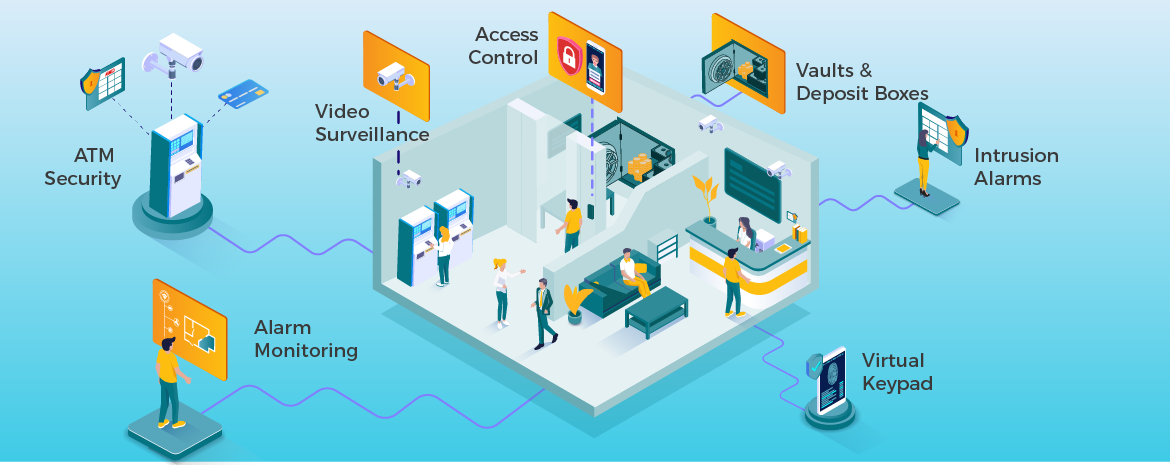
Branch Security Solutions
It is wise for every financial institution to re-examine their security efforts on a regular basis, and to reach out for expert advice. In general, a comprehensive security solution for a financial institution may include:
- Video Surveillance
- AI Weapons Detection
- Access Control
- Alarm Monitoring
- Intrusion Alarms
- Lighting Surveys
- Commercial Drawers
- Entrance Security Vestibules
- Night Depositories
- Burglary-Resistive Safes
- Safe Deposit Boxes
- Modular Vaults/Vault Doors
- Bullet-Resistive Windows
- Audio/Video Solutions
- Undercounter Solutions
- Infection Prevention Solutions
All financial institutions pose their own unique security challenges, which is why it’s important to receive a site survey or consultation from an expert in the financial security field. They can help to identify gaps in your current security systems or even design a plan from scratch to cover all areas. Many security vendors now offer integration with other solutions, providing a smooth and seamless experience anywhere from your video surveillance to your alarms.
> Get a Security Assessment from Our Expert Team
ATM Security for Banks and Credit Unions
ATMs are a prime target for criminals, and attacks are only growing by the day. Fraud, robberies, and other security breaches are unfortunately common at ATM locations around the world.
Keeping your consumers safe and protecting your fleet involves focusing ATM security efforts to protect against physical, hardware, and software attacks. Whether it’s skimming, brute force attacks, etc., there are security solutions for all ATM threats.
Get an in-depth exploration into the evolving trends and solutions centered around ATM security with a panel of experts. See examples of new skimming trends and learn how to spot PIN cameras, overlays, and more.
Types of ATM/ITM Attacks
There are several methods of attack that criminals use on ATMs, so it is imperative to remain informed about illicit activity in your area and ensure that your fleet is protected based on the potential risk within your specific market.
Physical ATM Attacks
Physical ATM attacks pose a large risk to property and life yet are generally unsuccessful. While criminals might not get away with the cash they were expecting, major damage to your fleet can occur from these attacks.
During a physical ATM attack, brute force is used to access the cash inside the machine. This can be carried out either at the ATM’s location, or at another location if a hook-and-chain type of attack is used.
At an ATM’s location, brute force from a crowbar, explosive device, or other tool is used to access the cash inside. Criminals attempt to break open the safe door to grab the cash kept inside.
In a hook-and-chain attack, a vehicle and chain are used to uproot an ATM. Another tactic involves using a forklift or other heavy machinery to puncture or move the ATM. It can then either be accessed for cash on-site or taken to another location.
Criminals even try to carry out physical attacks when staff have the ATM safe doors open for service or are transporting cash to and from the ATM.
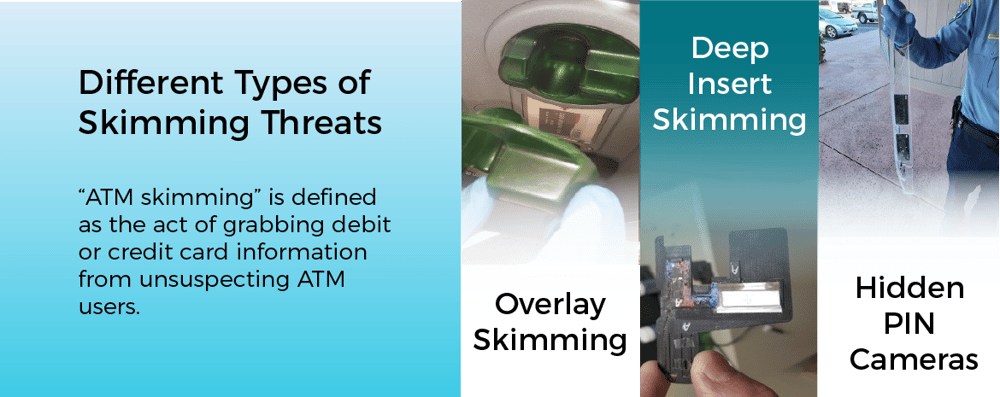
ATM Card Attacks: Bezel, Insert, and Deep Insert Skimmers
Skimming is the gathering of card information from consumers once it is inserted into an ATM. This can be done with different types of skimming devices which are implanted by criminals: bezel, insert, and deep insert skimmers.
Bezel skimmers cover up the ATM’s original bezel and can usually be detected by tugging on it/pulling it off. Insert and deep insert skimmers are placed into the card reader. Some insert and deep insert skimmers are so small and advanced these days, they are virtually undetectable- even by experienced ATM technicians.
Types of PIN capture devices may accompany some skimmers, such as PIN cameras and fake keyboard overlays. These devices capture the PIN number which can be associated with the skimmed card information.
Logical ATM Attacks: Jackpotting, Malware, and Electronic
Any attempt at tampering with an ATM’s software is considered a logical attack. These are more sophisticated attacks than physical and can often go undetected for long periods of time.
Once an ATM’s software is tapped into, criminals then either use external malware, electronic devices, or a combination of both, to control the machine, access the cash, or create fake debit/credit cards. A common logical attack is called “jackpotting.”
In jackpotting attacks, criminals must first gain physical access to the inside of the ATM. From there, they can use malware and/or other specialized electronics to control operations of the ATM, emptying the cash into their own wallets.
Other types of logical attacks include installing malware which can control the ATM as well as transactions, prompting the ATM to dispense money without showing it debiting money from an account. Certain types of malware can also record information from inserted cards, which is then used by the criminals. Malware can be installed physically or remotely.
Protection Solutions
ATM Physical Attack Protection Solutions
There are many ways to protect your fleet from physical attacks, mitigating risk to both property and life. An integrated mix of solutions is best for a holistic defense against attacks. These include:
- Integrated Alarm & Surveillance Solutions
- Safe Slot Reinforcement Kits
- Security Gates
- Anchoring Systems
- GPS Devices
- ATM Armor
- Cash Degradation
- Lighting Surveys
ATM Card Protection Solutions
To protect against skimming and keep consumers’ information safe, consider the following solutions for your fleet:
- Skimming Prevention Kits with Tilt Detection & Fascia Alarms
- Know Best Practices and Have Frequent Inspections
- Remote Management and Diagnostics
- TMD Active DIP Kit (ADK) - See Data Sheet Here
- Video Surveillance
- Audible and Strobe Alarms
ATM Logical and Network Protection Solutions
Keeping your ATM software secure will protect against malware and network attacks. Solutions include:
- Knowing Best Practices for Software Configurations and Firewalls
- Anti-Malware Applications with Active Whitelisting
- Software Tracking and Patching Process
- User-Based Access Control
- Hard Disk Encryption
- Unique Top Box Locks & Alarm Solutions
"Security threats and challenges will continue to evolve in today's environment. Brute force ATM attacks, skimming, fraud, vandalism, robberies, active shooters, cyber-attacks, and aging technologies may all seem daunting when building your security plan, but a good security partner can help in building upon every changing risk to our industry."
Gary Guerrero, Senior Vice President Security | FTSI
How to Start Protecting Your Fleet
Protecting your fleet starts with a consultation, to give security experts a full picture of your operations, strengths, and weaknesses. It’s also important to ensure your ATMs are fully up to date with any hardware or software updates recommended by your vendor or ATM manufacturer.
> Schedule a Security Assessment Today
Keeping an ATM security checklist and using it daily is an important practice, as well as making all staff aware of different types of ATM attacks and their warning signs. Keeping your consumers/members informed on what to watch out for to protect themselves and their information is another way to mitigate the effects of these attacks.
"FTSI is a security system integrator, bringing the best security solutions in the market seamlessly together to support and enhance your security plans as a true consultative partner.”
Gary Guerrero, Senior Vice President Security | FTSI
In business since 1998, FTSI’s top-notch team of experts know security for financial institutions better than any other company.
Contributors:
Maddy Fitzgerald
Content & Digital Marketing
Gary Guerrero
Senior Vice President of Security
Chad Wilson
Vice President of Operations
From Our Blog
Stay up to date with what's new in fintech for banks and credit unions.

Exploring the Future of Safety and Innovation in Technology
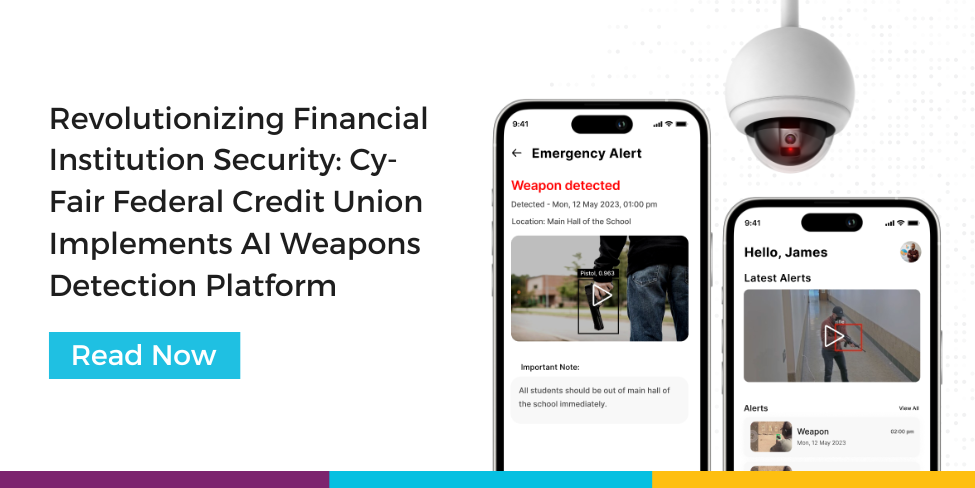
Revolutionizing Financial Institution Security: Cy-Fair Federal Credit Union Implements AI Weapons Detection
